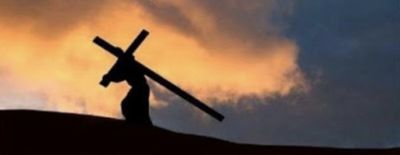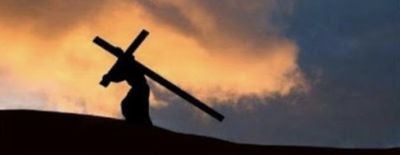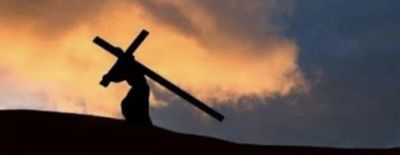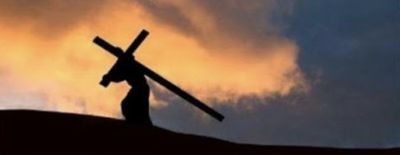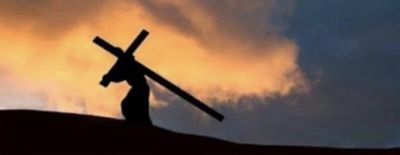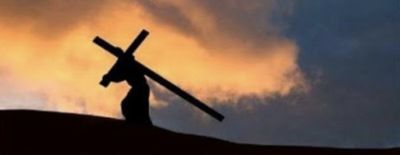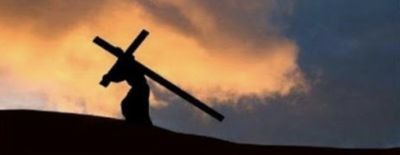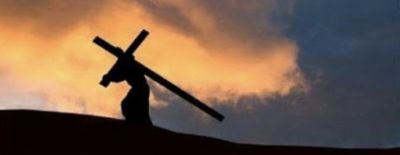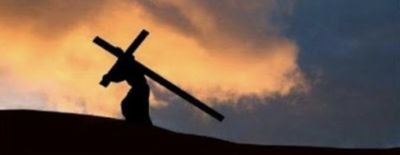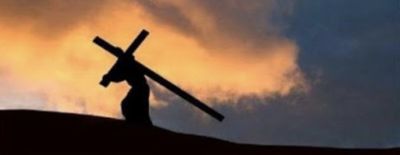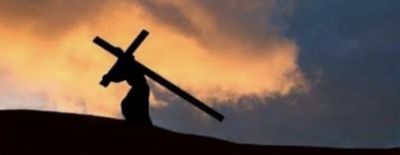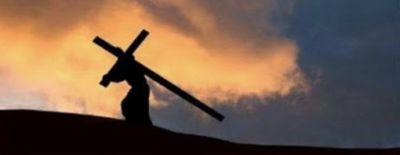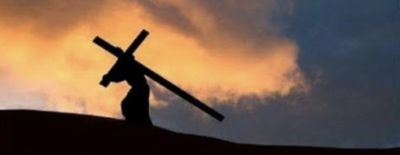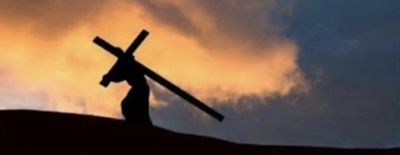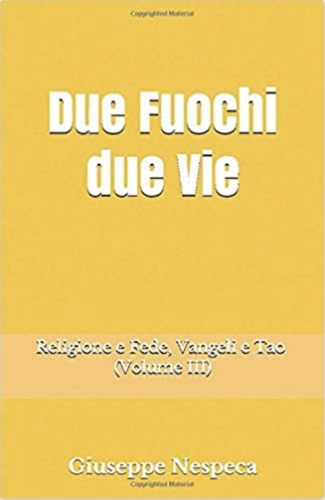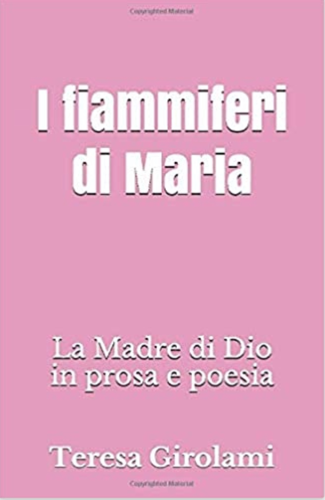Dialogo e Solstizio
Two sons: «No» and «Me!» (Mt 21:28-32) Matthew writes half a century after the death of the Master and notes that the majority of Abraham's children - his people -…
31
One 'character', or the Son of Man (Mt 11:16-19) The Gospels break through, advance and liberate, making us realise the enormous difference between any belief and Faith. They emancipate us…
37
Nov 30, 2025
Spirituality of Aurora source, and the sin of origin
Written by don Giuseppe Nespeca Published in Croce e Vuoto
In the Annunciation (Gen 3:9-15.20; Lk 1:26-38) A great theologian of the Mystical Body wrote: "At dawn there is a stupendous moment: that which immediately precedes the rising of the…
46
Nov 26, 2025
Power of the inner world, even in its depths
Written by don Giuseppe Nespeca Published in Croce e Vuoto
House on the Rock or practitioners of vain things (Mt 7:21.24-27) Pope Francis said: "In order to give himself to us, God often chooses unthinkable paths, perhaps those of our…
54
Nov 22, 2025
Advent: Coming and turning point. Vigilance is now
Written by don Giuseppe Nespeca Published in Croce e Vuoto
The reinterpretation of the liturgical colour purple Mt 24:37-44 (24-51) "Watch therefore, for you do not know on what day your Lord is coming" (v. 42). The key to understanding…
58
Nov 19, 2025
Values and emotional independence
Written by don Giuseppe Nespeca Published in Croce e Vuoto
Placing oneself in the events of persecution (Lk 21:12-19) The course of history is a time in which God composes the confluence of our freedom and circumstances. In such folds…
71
Nov 15, 2025
Today with Me: The Wine that brings us out of our nest
Written by don Giuseppe Nespeca Published in Croce e Vuoto
(Lk 23:35-43) The Son is crucified between criminals. For the political and religious powers, he was a far greater danger. According to Luke, only one of them reviled him; the…
84
Nov 11, 2025
Every Talent is a Call to exceed
Written by don Giuseppe Nespeca Published in Croce e Vuoto
Talents, mines - Gifts of the new Kingdom (Lk 19:11-28) How can a community reveal the Presence of God? By enhancing and accentuating the facets of life, defending them, promoting…
91
Nov 8, 2025
Stone upon stone: demands of the world, idea of 'perfection', sense of the Christ
Written by don Giuseppe Nespeca Published in Croce e Vuoto
(Lk 21:5-19) Stone upon stone, dark hues? Instances of the world, idea of 'perfection', sense of Christ (Lk 21:5-11) In his Apocalyptic Discourse Lk wants us to meditate on the…
92
Nov 4, 2025
Proximity of God, corporeality of Faith
Written by don Giuseppe Nespeca Published in Croce e Vuoto
Foreign Glory, or religiosity that gives birth to models and slaves (Lk 17:11-19) The impure had to stay out of the way: everything that was different from the dominant thought…
103
Honest administrators – at various levels – and our everyone’s Home (Lk 16:9-15) 'Ultimately,' says Jesus, 'you must decide: "You cannot serve both God and mammon" (Lk 16:13). Mammon is…
102
Oct 28, 2025
Three commitments, little adrenalin
Written by don Giuseppe Nespeca Published in Croce e Vuoto
And worrying about numbers (Lk 14:25-33) In his commentary on the Tao Tê Ching (vii) Master Ho-shang Kung writes: "The saint is devoid of self-interest and does not care to…
89
Oct 21, 2025
First last. The recovery of opposites
Written by don Giuseppe Nespeca Published in Croce e Vuoto
Narrow door: not because it is oppressive (Lk 13:22-30) The meaning of the first question is: "Is Salvation exclusive?" (v.23). Of course not - and not oppressive either. But it…
122
Conversion and Times (Luke 13:1-9) Conversion refers to a process that shakes the soul, because of an Encounter. A rediscovery that opens to self-knowledge. A dialogue that projects mind and…
149
Parishes: strive for Heaven, without burden or hindrance (Lk 12:35-38) In order to make us understand what it means to be prepared to set out immediately, Jesus urges our awareness,…
153
The ancient priest stagnates, and evaluates based on categories of possibilities; reluctant to the Spirit who moves situations
Il sacerdote antico ristagna, e valuta basando su categorie di possibilità; riluttante allo Spirito che smuove le situazioni
«Even through Joseph’s fears, God’s will, his history and his plan were at work. Joseph, then, teaches us that faith in God includes believing that he can work even through our fears, our frailties and our weaknesses. He also teaches us that amid the tempests of life, we must never be afraid to let the Lord steer our course. At times, we want to be in complete control, yet God always sees the bigger picture» (Patris Corde, n.2)
«Anche attraverso l’angustia di Giuseppe passa la volontà di Dio, la sua storia, il suo progetto. Giuseppe ci insegna così che avere fede in Dio comprende pure il credere che Egli può operare anche attraverso le nostre paure, le nostre fragilità, la nostra debolezza. E ci insegna che, in mezzo alle tempeste della vita, non dobbiamo temere di lasciare a Dio il timone della nostra barca. A volte noi vorremmo controllare tutto, ma Lui ha sempre uno sguardo più grande» (Patris Corde, n.2)
Man is the surname of God: the Lord in fact takes his name from each of us - whether we are saints or sinners - to make him our surname (Pope Francis). God's fidelity to the Promise is realized not only through men, but with them (Pope Benedict).
L’uomo è il cognome di Dio: il Signore infatti prende il nome da ognuno di noi — sia che siamo santi, sia che siamo peccatori — per farlo diventare il proprio cognome (Papa Francesco). La fedeltà di Dio alla Promessa si attua non soltanto mediante gli uomini, ma con loro (Papa Benedetto)
In the communities of Galilee and Syria the pagans quickly became a majority - elevated to the rank of sons. They did not submit to nerve-wracking processes, but spontaneously were recognizing the Lord
Nelle comunità di Galilea e Siria i pagani diventavano rapidamente maggioranza - elevati al rango di figli. Essi non si sottoponevano a trafile snervanti, ma spontaneamente riconoscevano il Signore
And thus we must see Christ again and ask Christ: “Is it you?” The Lord, in his own silent way, answers: “You see what I did, I did not start a bloody revolution, I did not change the world with force; but lit many I, which in the meantime form a pathway of light through the millenniums” (Pope Benedict)
E così dobbiamo di nuovo vedere Cristo e chiedere a Cristo: “Sei tu?”. Il Signore, nel modo silenzioso che gli è proprio, risponde: “Vedete cosa ho fatto io. Non ho fatto una rivoluzione cruenta, non ho cambiato con forza il mondo, ma ho acceso tante luci che formano, nel frattempo, una grande strada di luce nei millenni” (Papa Benedetto)
Experts in the Holy Scriptures believed that Elijah's return should anticipate and prepare for the advent of the Kingdom of God. Since the Lord was present, the first disciples wondered what the value of that teaching was. Among the people coming from Judaism the question arose about the value of ancient doctrines…
Gli esperti delle sacre Scritture ritenevano che il ritorno di Elia dovesse anticipare e preparare l’avvento del Regno di Dio. Poiché il Signore era presente, i primi discepoli si chiedevano quale fosse il valore di quell’insegnamento. Tra i provenienti dal giudaismo sorgeva il quesito circa il peso delle dottrine antiche...
Gospels make their way, advance and free, making us understand the enormous difference between any creed and the proposal of Jesus
duevie.art
don Giuseppe Nespeca
Tel. 333-1329741
Disclaimer
Questo blog non rappresenta una testata giornalistica in quanto viene aggiornato senza alcuna periodicità. Non può pertanto considerarsi un prodotto editoriale ai sensi della legge N°62 del 07/03/2001.
Le immagini sono tratte da internet, ma se il loro uso violasse diritti d'autore, lo si comunichi all'autore del blog che provvederà alla loro pronta rimozione.
L'autore dichiara di non essere responsabile dei commenti lasciati nei post. Eventuali commenti dei lettori, lesivi dell'immagine o dell'onorabilità di persone terze, il cui contenuto fosse ritenuto non idoneo alla pubblicazione verranno insindacabilmente rimossi.


